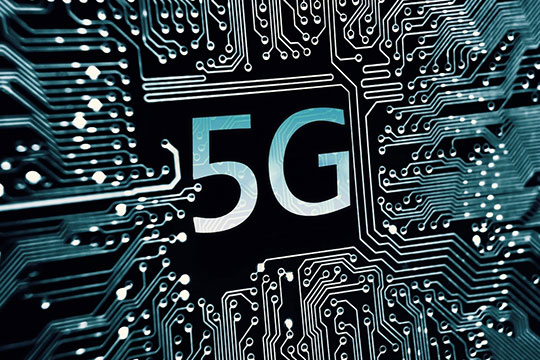series: 7G Wireless Networks COURSE: 090819823 QUANTUM NETWORKS
series: 7G Wireless Networks COURSE: #090819822 QUANTUM COMPUTING WITH CONTINUOUS VARIABLE
series: 7G Wireless Networks COURSE: #090819821 QUANTUM MACHINE LEARNING
Education
Future Wireless Networks: 5G/6G Technology

Softerization and Network Function Virtualization introduced by 5G technology has enabled unprecedented opportunities for introducing new dynamic networking paradigms that will enable further increase in network capacity, improved network latency, significant network densification with improved energy efficiency.
Participants with background in either Networks Design or Networks/Internet Economics should benefit from participation.
The course discusses these new incoming technologies with emphasis for the need of joint optimization of technology and business models, including new monetary systems, with significant involvement of Artificial Intelligence.
Future Wireless Networks: 5G/6G Technology
Artificial Intelligence in Wireless Networks

By increasing the density and number of different functionalities in wireless networks there is more and more need for the use of artificial intelligence for planning the network deployment, running their optimization and dynamically controlling their operation.
Machine learning algorithms are used for the prediction of traffic and network state in order to timely reserve resources for smooth communication with high reliability and low latency. Big data mining is used to predict customer behavior and timely pre-distribute (cashing) the information content across the network so that it can be efficiently delivered as soon as requested.
Intelligent agents can search the internet on behalf of the customer in order to find the best options when it comes to buying any product on line
The course covers a review of AI based learning algorithms with a number of case studies supported by Python and R programs.
It provides a discussion of the learning algorithms used in decision making based on game theory and a number of specific applications in wireless networks such as channel, network state and traffic prediction
Artificial Intelligence in Wireless Networks
Quantum Computing
When moving from 5G to 6G/7G communication networks there will be need for more sophisticated network optimization tools with respect to both, computational speed and efficiency of optimization algorithms.
It looks like that Quantum Computing (QC) technology offers significant improvements in both of these aspects. Due to inherent parallelism in the processing of quantum information, unpresented increases in computation speed are anticipated. Similarly a number of algorithms developed within the umbrella of quantum technology, like quantum search algorithms (QSA) developed for big data analysis, could be used to help us with more efficient optimization of communication networks. In the past, most of the time we would end up with a formulation of the optimization problem that would need exhaustive search through all combination of the system parameters. This would be unacceptable solution when it comes to complexity and as a consequence we would be looking for simplifications that would on the other hand reduce the performance. By combining the advantageousness of both, unprecedented increase of computational speed and efficiency of QSA we will be able to significantly improve the optimization algorithms for network, deployment and optimization.
For these reasons, the focus of the course will be on discussing the principles of QC and detailed presentations of possibilities of using QSA in communication networks.
Globalcomm/Institute for Networking Sciences
Mission of the Institute
The Institute is non profit organization engaged in the research and education that will set up foundation to the modelling of complex systems sometimes referred to as system of systems or what we like to call InSyNETs (Inter System Networking). In our community and in Europe in general there is a support for such approach and the calls for project applications become more and more multidisciplinary. Calls like Smart Cities, Low Carbon Environment, Energy Efficiency… require coordinated integration of the methodologies from communications/networking, computer sciences, control theory, artificial intelligence, energy sector, economics, industrial process engineering, transportations….. This mission is reflected in the organizational structure of the Institute and in our research programs. Consequently, we also provide educational programs to support our research, which are not available on conventional universities.
Research
Institutes
INS Institute for Networking Sciences , C networks (communications) 5G/6G Networks & IoT, E networks (energy networks) Stability control and business models of renewable power grid , S networks (social) Modeling dynamics of complex networks ,Economics/Microeconomics/Blockchain, T networks (transportation) Autonomous driving, Insynets, Bio Networks, Artificial Intelligence in Networks , NS Networking Sciences, QC Quantum Computing Networks
contacts
Globalcomm Oy: EU: ph +358 40 501 9201, +358 44 327 5699,
US: +1 904 4954809, emails: administration@ins-netgroup.com, legal@ins-netgroup.com
InSyNET: Inter System Networking
InSyNET: Inter System Networking
The advanced Large Area Industrial Processes nowadays include a number of different components (systems) that jointly optimize the production process. Examples are: Energy production where the energy sources are incorporated into a system that uses different supporting systems for its optimization, such as communications (IoT), artificial intelligence for different learning mechanisms to predict weather and energy consumption, big data etc. Another example is a distributed collision avoidance algorithm for multiple dynamic vehicles moving in arbitrary dimensions. INS is doing research in the field of distributed intelligence and joint optimization of system of systems
Manufacturing Network Organization
Nowadays more than 50% of manufacturing companies worldwide are outsourcing activities that are not considered their core competencies. The motivation for outsourcing is to reduce production costs, intensify the focus on customer relations, making company reconfiguration more nimble and accessing management expertise that is not available internally. The aim of manufacturing network is to form the best collaborative networked organization of small manufacturers to optimize a production plan. The research methodology employed involves techniques such as interaction protocol development, ontology engineering, and principles from concepts such as the contract net protocol, the product-resource-order-staff-architecture, the auctioning process, agent-based modeling, and rule-based programming. INS is actively involved in the research in this field.











